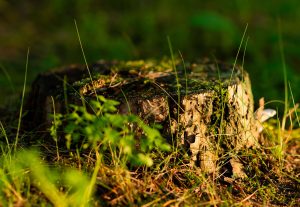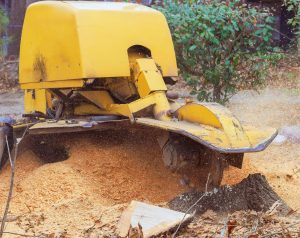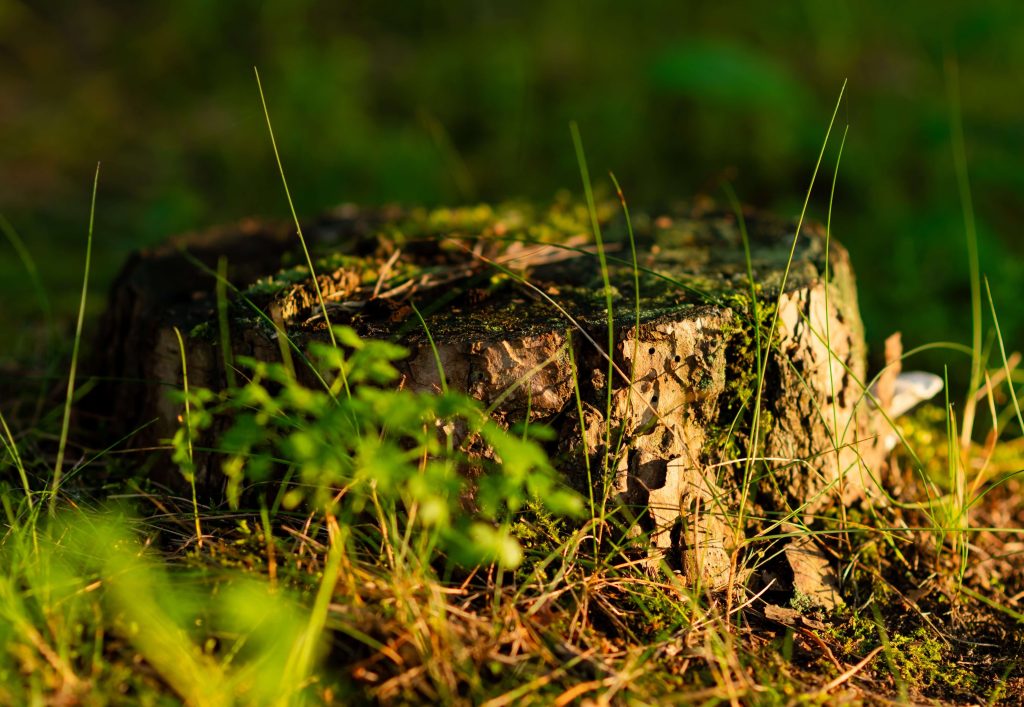You’ve handled the tree. Now the stump is in the way of your plans—and your lawn. The right call is usually between stump grinding (a fast, low-impact finish) and full stump removal (a deeper excavation that pulls the root ball). This guide explains when each option makes sense so you can budget clearly and reclaim your yard without surprises.
Why this decision matters for London homeowners
Your choice affects cost, timelines, cleanup, and future projects. Grinding gets you back to grass quickly. Full removal creates compactable soil that’s ready for footings, patios, hot tub pads, driveways, or large replanting. If your goal is a smooth lawn and garden beds, grinding is often enough. If you’re planning structures on that exact footprint, removal may be the better long-term investment.
Reason 1 — Lower impact, faster cleanup
Grinding uses a specialized machine to shred the stump and shallow roots into mulch below grade. You’re left with a neat cavity and a pile of wood chips that can be removed or reused as mulch. Compared with excavation, it’s quicker and gentler on the lawn.
Why homeowners prefer it
- Minimal disturbance to topsoil, irrigation, and hardscapes.

- Most yards are ready for topsoil and seed the same day.
- Lower chance of exposing large roots that need heavy backfilling.
What “grinding depth” means on a typical job
Standard service aims for a depth below grade that supports topsoil and turf or a small bed. If you’re planting shrubs, creating a garden pocket, or levelling for sod, your arborist can adjust depth to fit the plan. For deck footings or pads, discuss depth and soil prep with your arborist and contractor so the finish is ready for the work that follows.
Reason 2 — Better value for most yards
Grinding is typically more cost-effective because it avoids heavy excavation and hauling a massive root ball. You’re paying for time on the grinder and tidy restoration, not for large equipment and disposal.
Where grinding shines
- Front lawns and boulevards where curb appeal and speed matter.
- Garden beds that need a level surface—not deep, compactable soil.
- Tight-access sites where a portable grinder fits but excavators do not.
When grinding isn’t enough (go full removal)
Choose complete removal if any of these apply:
- You’re installing concrete, pavers, or patio footings and need compactable soil.
- You’re pouring driveways, pads, or additions where voids from decaying wood could cause settling.
- You want large-caliper replanting exactly where the stump sits.
- You’re dealing with aggressive resprouting; pairing cutting with targeted stump treatment can stop suckers (see this homeowner explainer from This Old House for typical methods and safety notes).
→ How to Kill a Tree Stump (This Old House)
Reason 3 — Safer around utilities and existing landscaping
Because grinding targets wood just below the surface, it reduces deeper soil disturbance near utility corridors, gardens, and roots you want to preserve. That said, your crew still needs a clear, safe work area.
Pre-work checklist for a smooth, safe day
- Confirm utility locates are requested and available before any digging or grinding.
- Mark sprinklers, dog fences, and private lines if known.
- Decide on chip removal vs reuse to avoid uneven spots or pests.
- Keep kids and pets indoors during grinding to avoid flying debris.
Stump removal London Ontario: when full removal is smarter
Full stump removal (also called extraction or grubbing) uses excavation to pull the stump and a significant portion of the root ball. It’s more disruptive, but it eliminates buried wood and leaves compactable soil—ideal for structures and heavy loads.
Projects that benefit from full extraction
- Decks, additions, sheds, hot tubs, and driveways—anything load-bearing.

- Retaining walls or fence posts where uncompacted chips could settle.
- Replanting large trees exactly on the old footprint.
- Stumps from species that resprout aggressively; removal plus targeted treatments can prevent suckers (see This Old House).
→ How to Kill a Tree Stump (This Old House)
Pros and cons at a glance
- Pros: No buried wood to decay, reduced risk of voids, best base for hardscapes.
- Cons: Higher cost, bigger excavation to backfill, more lawn disturbance and access needs.
Field note: Many horticulture and extension guides outline removal steps like trenching around the stump, severing lateral roots, and extracting the root mass—labour-intensive but thorough.
Costs, timing, and what to expect from Brockley Tree
Pricing depends on stump size, species, access, obstacles, and cleanup. What you can expect from a professional visit:
1) Site check & compliance
We review access, slopes, nearby plantings, and any known utility markings. If your original tree removal in London involved permits or neighbor considerations, we’ll note that context so the follow-up work goes smoothly.
2) Depth & cleanup plan
We recommend a grind depth based on your goal—lawn, garden bed, small tree, or hardscape—and include chip handling in the estimate. If your plan calls for full removal, we’ll outline excavation and backfill so the area is ready for construction.
3) Execution & finish
We grind or extract, then rake and tidy. Need chips hauled and topsoil added? We’ll price it in. Most grinding jobs wrap the same day; removal projects vary with access and size.
When you’re ready, book your visit on our Tree & Stump Removal page, or contact Brockley Tree to compare options and get a fixed quote.
FAQs
Is stump grinding safe for nearby gardens?
Yes. Grinding is targeted and shallow. We protect beds and hardscapes, and you choose whether chips stay or go.
Will the stump grow back after grinding?
Some species can sucker from roots. A deeper grind and proper aftercare reduce the chance. Where needed, homeowner guides outline selective treatments applied promptly after cutting—always follow product labels and safety directions.
→ How to Kill a Tree Stump (This Old House)
How soon can I re-sod or replant?
Often same day after backfill. For large trees or hardscapes on the same footprint, choose deeper grinding or full extraction.
Do I need City permission to remove a stump?
Permits typically apply to trees, not leftover stumps. If you’re unsure about earlier work or future plans, ask our team to review the context during your quote visit.
What’s the fastest way to get scheduled?
Send an address, a quick photo or two, and your goal (lawn vs structure) through our contact form. We’ll confirm access, scope, and the earliest slot.

